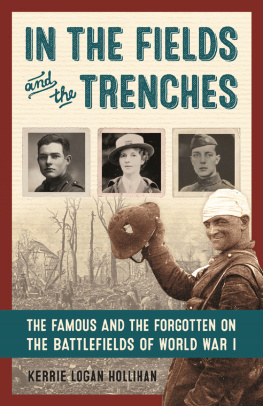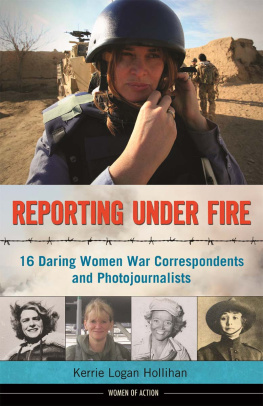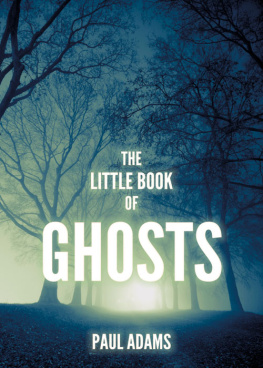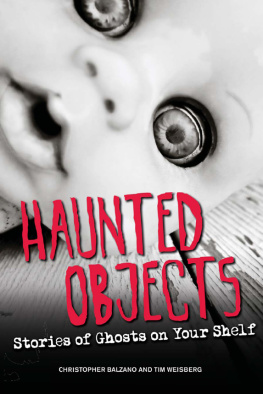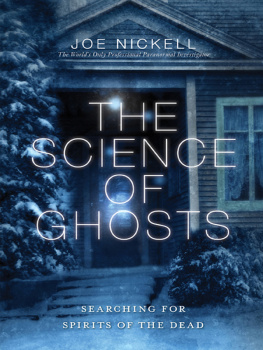Contents
Guide
Page List



To my sister Anne Logan German,
who shall forever be Tinker
Front cover: Built in 1893, the Littlefield House in Austin, Texas, is no stranger to ghosts. There have been ghost sightings, unexplained bumps in the night, and items moved from place to place.
Cataloging-in-Publication Data has been applied for and may be obtained from the Library of Congress.
ISBN 978-1-4197-4679-6
eISBN: 9781647000318
Text copyright 2020 Kerrie Logan Hollihan
Edited by Howard W. Reeves
Book design by Becky James
For picture credits, see .
Published in 2020 by Abrams Books for Young Readers, an imprint of ABRAMS. All rights reserved. No portion of this book may be reproduced, stored in a retrieval system, or transmitted in any form or by any means, mechanical, electronic, photocopying, recording, or otherwise, without written permission from the publisher.
Abrams Books for Young Readers are available at special discounts when purchased in quantity for premiums and promotions as well as fundraising or educational use. Special editions can also be created to specification. For details, contact specialsales@abramsbooks.com or the address below.
Abrams and Creepy and True are registered trademarks of Harry N. Abrams, Inc.

ABRAMS The Art of Books
195 Broadway,
New York, NY 10007
abramsbooks.com
CONTENTS


Artist Arthur Wragg illustrated the Cornish Litany in the early 1920s.
INTRODUCTION

FROM GHOULIES & GHOSTIES AND
LONG-LEGGETTY BEASTIES
AND THINGS THAT GO BUMP IN THE NIGHT
GOOD LORD, DELIVER US!
AN OLD CORNISH PRAYER
I AINT AFRAID OF NO GHOSTS!
GHOSTBUSTERS
Do you believe in ghosts? Agreed, ghosts are creepy.
Tune in to any number of cable channels or podcasts, and youll discover people armed with every kind of electronic gadget searching for ghosts or ghouls or things that go bump in the night. There are well-documented accounts of ghost sightings, and many very reliable folkslike ministers, school principals, teachers, and otherssupply them.
Or you might be the ghost-disbelieving kind. Lots of people think the notion of ghosts is just plain silly. They think that ghosts can all be explained by science.
Some scientists believe that seeing ghosts is simply a symptom of the brain not doing its job. Brain damage, illness, or even waking up sleep-deprived and groggy can make us see things that are not real. You can read about this in all kinds of science journals and magazines.
But, as the pages that follow will reveal, there are lots of ghosts to chase downall around the globe. Not ghost stories, which we have aplenty, but sightings of ghosts that are based in truth, in actual events. For the people who see them, ghosts are true. Very true. The Pew Research Center, a big-time group that asks ordinary people what they think, declared in October 2015, Nearly one-in-five U.S. adults (18%) say theyve seen or been in the presence of a ghost.
In the spirit of researching this book, I reached out to people I encounter every day to ask, Do you believe in ghosts? I first started with Tia, a sixth grader who lived across the street from me and was hanging with her friend.
Do you believe in ghosts? I asked. No, Tia said without hesitation.
Her friend answered by screwing up her face and saying, Maybeeeeee.
Then almost in unison the girls exclaimed, But theres a girl in our class, and she talks to them all the time!
There you have it. To the people who see them, ghosts are quite true.
When I was thirteen years old, in 1965, my grandmother died. We lived near Chicago, and our family took a passenger train overnight to northwestern North Dakota, where Grandma was to be buried. It was a very sad time for our family, especially for my little sister, Anne, who was ten.
She was Grandmas favorite, I think; they had a very close relationship for the few years that Grandma lived near our home. Anne would stop by every day after school to say hello. Grandma loved all her grandchildren, of course, but she and Anne shared an extra bit of special understanding.

Grandma didnt smile much for pictures, the author recalls. The author, her grandmother Bertha Johnson, and her sister, Anne.
After we returned home from Grandmas funeral, our mom had a visitor stop by. I heard Mama tell her friend how sad Anne had been about Grandmas death. Mama had noticed how my sister had lingered at the cemetery to watch from afar as Grandmas casket was lowered into the ground.
It wasnt until we were both grown up, with kids of our own, that Anne told me a secret. Not long after Grandma died, she had visited Anne in the middle of the night.
She was patting my left lower leg. The covers were up, and she was sitting on the end of the bed, Anne remembered.
Anne says she woke up. She could feel Grandmas form as she sat there.
Im okay, Tinkie, Grandma said to her. You dont need to worry about me. Tinkie was her pet name for my sister.
Anne is a straight-talking, sensible woman. To this day, she insists that Grandmas visit was real:
Thinking back on my experience, I dont recall ever considering Grandma as a ghost or a spirit. She appeared as a live person, just her. I didnt think of the experience as being unusual at the time. It wasnt until I told others that the word ghost or spirit was used.
Theres no end to what you can learn about ghosts. Let this book be your beginning.

Before we start, it might be helpful to learn a few synonyms for a ghost. There are specters, for instance, which make spectral appearances, and apparitions that appear. Haunt is a word used as both subject and verb, but haint might be new to you. (Its a ghost, BTW.)
If you are German, a ghost is ein Geist, and in Spain its un fantasma. In French that would be un fantme. Which ties back to English, right? Phantoms are ghosts, too. Words have family histories, just as people do!
One more vocabulary word you probably know but might not know why: Often when we watch shows or videos about ghosts, hosts of paranormal investigators are swarming around. They are armed with high-tech electronics to detect signs, sounds, or smells that indicate ghosts are present.


